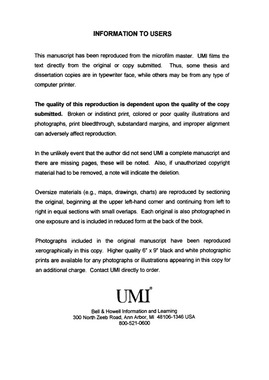| dc.contributor.advisor | McCarthy, David, | en_US |
| dc.contributor.author | Kupfer, Doris Marie. | en_US |
| dc.date.accessioned | 2013-08-16T12:30:42Z | |
| dc.date.available | 2013-08-16T12:30:42Z | |
| dc.date.issued | 1999 | en_US |
| dc.identifier.uri | https://hdl.handle.net/11244/5858 | |
| dc.description.abstract | Since these ESTs are a rich resource of expressed gene sequences useful to the large community of fungal researchers, the resulting EST database was made publicly available by submission to GenBank and placement on the ACGT website. In addition, the cDNA clones were submitted to the Fungal Genetics Stock Center, University of Kansas Medical Center, Kansas City. These ESTs will provide a sequence and clone source for hybridization probes for A. nidulans expressed genes as well as for related fungi with industrial, agricultural and health application. | en_US |
| dc.description.abstract | A. nidulans is a well-studied model multicellular ascomycete closely related to both human and plant fungal pathogens. To investigate the expressed genes in this model fungus, a cDNA library containing clones from vegetatively and asexually expressed genes was sequenced from both the 3' and 5' ends. These cDNA end sequences called expressed sequence tags or ESTs reveal genes which were expressed at the time of mRNA harvest. The 3' ESTs were aligned using the multiple sequence assembly program Phrap to follow the level of sequence redundancy and to measure the percent of new genes detected during the sampling of the cDNA library. A Unigene database representing approximately 3200 genes was generated after assembly of the 3' and 5' ESTs using Phrap to cluster the EST sequences which were generated from the same gene. The Unigene sequences were examined for homologs in GenBank using the Blast alignment program and organized into groups based on a Biological Function Classification schema. Almost 56% of the Unigene database members had no homologs in GenBank and thus represented newly discovered genes. The Unigene database also was useful in annotating three A. nidulans chromosome VIII cosmids and a 60 Kbp region from chromosome IV containing the sterigmatocystin gene cluster. Through these studies, an average gene density of 1 gene/2.6 Kbp was obtained and a total number of 12,000 genes was predicted for the A. nidulans genome. | en_US |
| dc.format.extent | xiii, 292 leaves : | en_US |
| dc.subject | Ascomycetes. | en_US |
| dc.subject | Molecular cloning. | en_US |
| dc.subject | Biology, Microbiology. | en_US |
| dc.subject | Gene expression. | en_US |
| dc.subject | Biology, Molecular. | en_US |
| dc.title | Development, analysis and use of an expressed sequence tag database from the multicellular asomycete, Aspergillus nidulans. | en_US |
| dc.type | Thesis | en_US |
| dc.thesis.degree | Ph.D. | en_US |
| dc.thesis.degreeDiscipline | Department of Microbiology and Plant Biology | en_US |
| dc.note | Source: Dissertation Abstracts International, Volume: 60-08, Section: B, page: 3747. | en_US |
| dc.note | Chair: David McCarthy. | en_US |
| ou.identifier | (UMI)AAI9941849 | en_US |
| ou.group | College of Arts and Sciences::Department of Microbiology and Plant Biology | |
